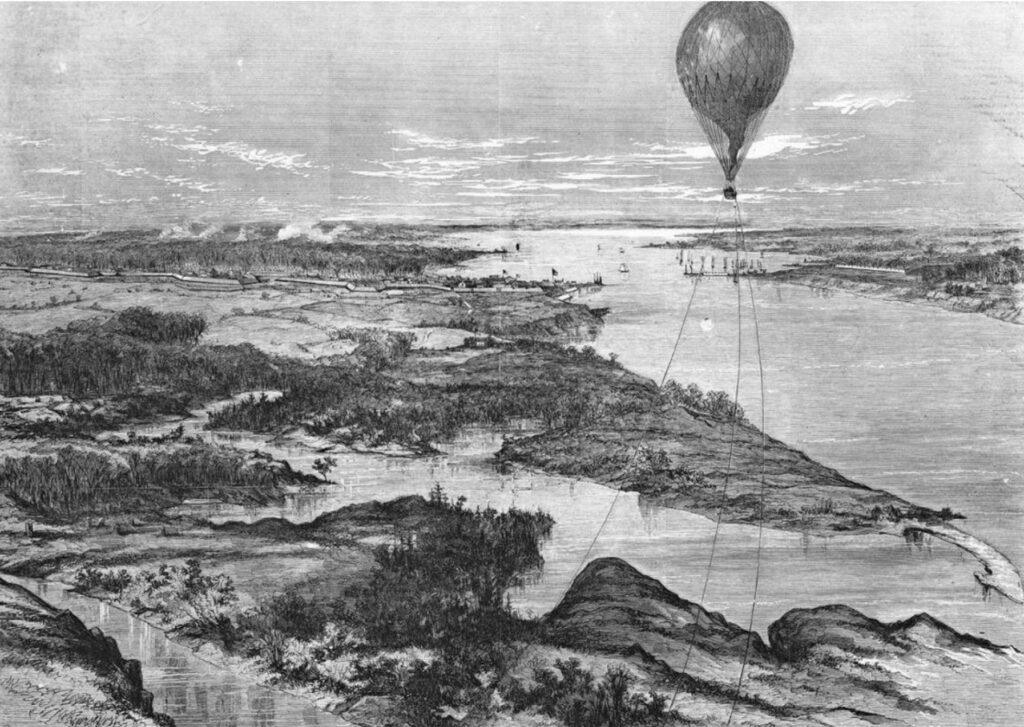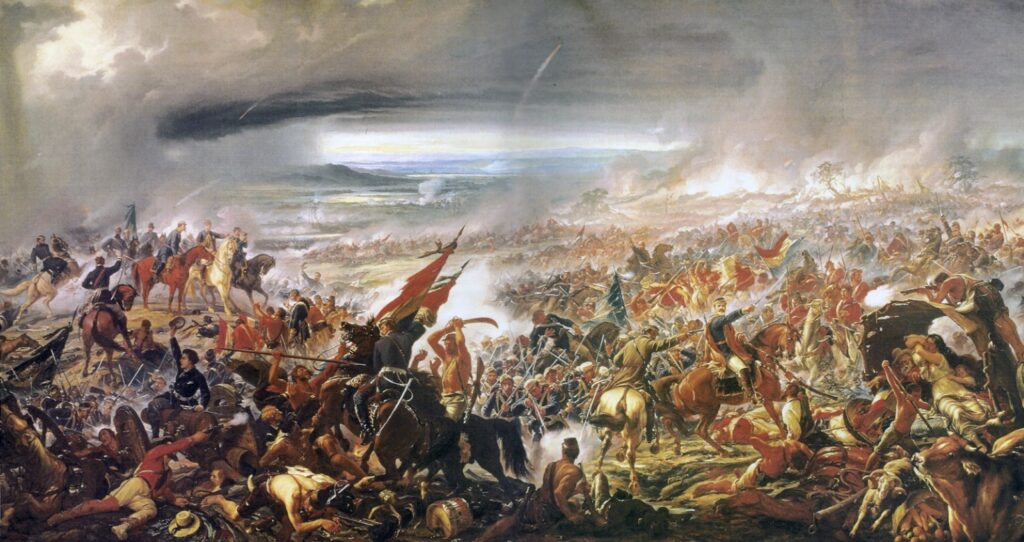The American Civil War was the proving ground for military ballooning and the advantages of aerial perspective. Once affirmed on the battlefield, aeronauts sought new opportunities to apply aerial reconnaissance. Two pioneers, John and Ezra Allen, took their expertise to South America, playing key roles in one of the region’s bloodiest conflicts — the Paraguayan War.
The Allen Brothers in the Civil War
The Allen brothers were among America’s most experienced balloonists. Like Thaddeus Lowe, they had witnessed firsthand the transformative power of aerial observation during the American Civil War. While Lowe led the Union Army Balloon Corps, John and Ezra Allen contributed separately, providing critical intelligence to Union commanders.

Despite the Balloon Corps’ dissolution in 1863, the Allens remained convinced balloons were warfare’s future. As the war ended in the U.S., a new opportunity arose thousands of miles away.
A New Battleground
The Paraguayan War — or War of the Triple Alliance — raged between Paraguay and Brazil, Argentina, & Uruguay from 1864 to 1870. It became the deadliest conflict in South American history, devastating Paraguay and halving its population. The war began when Paraguayan dictator Francisco Solano López aggressively attacked Brazil and Argentina, aiming to secure Paraguay’s independence.
As the war dragged on, the Brazilian-led coalition sought innovative ways to gain an edge. Recognizing aerial observation’s value during the American Civil War, Brazil sought experienced balloonists. John and Ezra Allen stepped into this role.

Balloons Over Paraguay: The Allen Brothers’ Role
In 1867, Brazil officially recruited the Allens for aerial reconnaissance against Paraguayan forces. The brothers brought extensive experience and specially designed hot air balloons, heated by open flames. Unlike hydrogen balloons used in the U.S. Civil War, these were easier to inflate in the field without complex gas equipment.
The balloons scouted Paraguayan fortifications, monitored troop movements, and directed artillery fire with newfound accuracy. Their high vantage point provided strategic intelligence otherwise impossible to obtain in Paraguay’s dense, swampy terrain. Enemy encampments invisible from the ground were now identifiable and targetable.
The psychological impact was notable. Paraguayan soldiers, unfamiliar with aerial reconnaissance, feared the balloons, sometimes interpreting them as supernatural omens. The mere presence of these floating observers reportedly sowed confusion and fear among enemy ranks.

Impact of the Aerial Perspective
Intelligence from the Allens’ balloon ascents directly influenced critical battles, notably the Siege of Humaitá (1868), a significant turning point. Humaitá, Paraguay’s most formidable stronghold along the Paraguay River, had resisted previous assaults due to dense terrain and fortifications. Balloon reconnaissance allowed Brazilian forces to map enemy positions effectively, refining their siege strategy.
Seeing beyond natural barriers proved decisive. Aerial intelligence enabled the coalition to encircle Humaitá, cutting Paraguayan supply lines and forcing surrender. Humaitá’s fall marked Paraguay’s decline; although fighting continued for two more years, the country never recovered.
Once again, the Allen brothers demonstrated balloons’ capacity to influence warfare—not through direct combat but by providing unmatched battlefield perspective.
Aerial Reconnaissance Crosses the Atlantic
With the Paraguayan War proving aerial reconnaissance’s global potential, the next chapter in military ballooning unfolded. European powers took note of successes in the Americas, prompting British military officials to explore balloon reconnaissance for their forces.
In Part III, we’ll follow military ballooning’s journey across the Atlantic, examining its demonstration in England and setting the stage for its role in future European conflicts.
